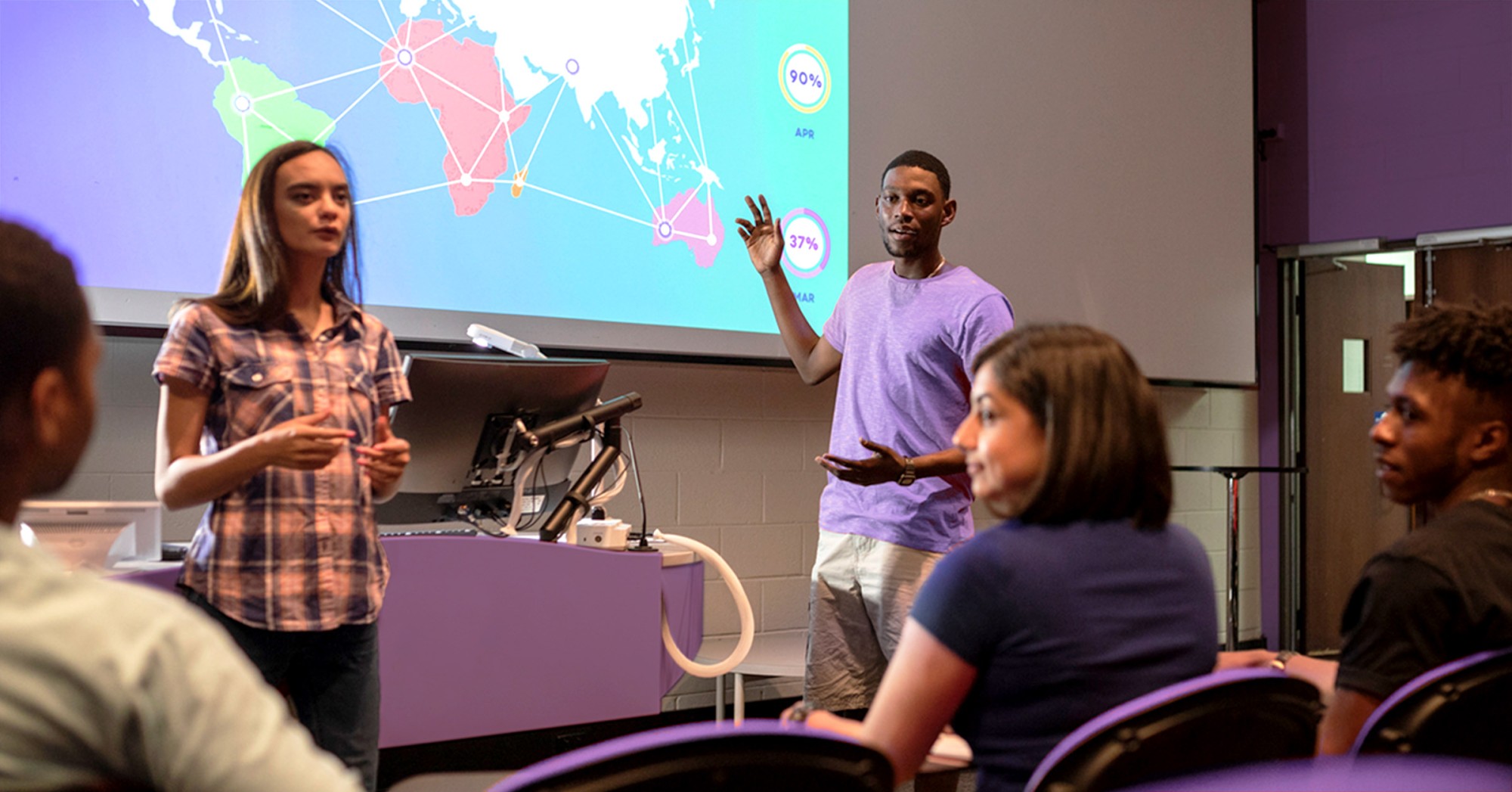
Spotlighting accessibility issues in higher education
While there has been significant progress in diversity, equity, and inclusion (DEI) efforts in education, accessibility is often glaringly absent from the discussion. This is particularly true in higher education, where barriers to access intersect and are often compounded when dealing with historically marginalized groups. Whether the barrier is as complex as breaking the stigma around disability and shifting collective views or more straightforward technical changes, higher ed still has a lot to learn.
Often the onus is placed on the disabled learner to do the heavy lifting when it comes to getting accommodations and access. But the toll of continuously disclosing can be traumatic for students who do identify as disabled and intimidating to those considering asking for help.
In honor of International Day of Persons with Disabilities on December 3, a day established to mobilize support for disabled peoples’ [1] dignity, rights, and well-being by contextualizing the lived experiences of the disabled, here are a few essential high-level considerations for establishing an accessible classroom in higher education with DEI in mind.
Universal design for learning
Implementing accessibility into higher education requires a fundamental understanding that all students, regardless of ability, will learn differently. By acknowledging this, institutions and instructors can introduce Universal Design for Learning (UDL) into their classrooms. UDL is a framework designed to improve and optimize teaching and learning for all people based on scientific insights into how we learn. In short, UDL focuses on providing a diverse pedagogy that accords students more autonomy in their learning.
UDL explores the Why, What, and How of learning by breaking it down into three respective categories: Engagement (the Why of learning), Representation (the What of learning), and Action and Expression (the How of learning). Instructors should ask themselves questions such as, "How can I engage all of the students in my class?", "How can I provide information in a way that all students can understand?", and "How can I provide students with realistic opportunities to demonstrate what they know?" Utilizing UDL also sends the important message that obstacles to learning are caused by the environment and not by the student.
Fostering inclusivity with course design and preparation
A key component in creating an inclusive and engaging classroom environment is ensuring that all students can access their learning materials. Part of this involves reframing the narrative that providing or creating accessible content is too overwhelming or complicated. One does not need to be an expert in the field of digital accessibility in order to remediate inaccessible content, but we do need to be willing to accept our role in both the creation and preservation of an accessible classroom. This can begin with some of the easier accessibility issues to fix, such as always adding alternative text to images, ensuring that Word documents contain headings, and avoiding images that can cause seizures or strain the eyes. It can then extend into the more advanced content remediation space of fixing inaccessible PDFs or ensuring proper color contrast in documents. In this case, the phrase “practice, not perfection,” is paramount in breaking down barriers to learning. The hope is that with time and practice, it will become a more organic and ingrained process for instructors in their continuous quest to create an accessible learning environment.
Every course in higher education should begin with an accessibility statement that includes an instructor’s explicit commitment to accessibility, contact information for the institution’s accessibility office, information about classroom accommodations, and an open invitation for students to approach them with any questions or concerns. This immediately demonstrates to students that accessibility is a priority in their classroom, fostering a sense of trust and maintaining open lines of communication. To determine the specific accessibility requirements of students in terms of both learning needs and practicalities, instructors could consider administering an anonymous accessibility survey. The survey responses can be used to guide instructors in creating a fully inclusive classroom.
Setting clear expectations for all aspects of the core curriculum is an imperative part of any accessible classroom, as it helps unveil the often-hidden expectations instructors have for students that are not explicitly stated. In order to succeed, students need to understand what instructors expect of them and what options are available to them to demonstrate their learning.
Break barriers with classroom engagement
When it comes to the content delivery of a course, institutions can implement some simple, helpful technologies that benefit all students without the need for a student to disclose their disability directly to instructors. For example, every instructor should be outfitted with a microphone, regardless of the size of the class. It can also be incredibly helpful to allow students to record lectures or lessons to be rewatched later. Instructors should inform students ahead of time that recordings are allowed in class, followed by any pertinent rules or information. Content should also be available in multiple formats, and selecting books with print, electronic, and audio versions is an important step in granting more access to all students, not just those that identify as disabled.
A critical way to engage a classroom is with a content recap. Repeating the key takeaways from the content in the lesson or lecture helps students retain course content and accommodates a diverse spectrum of learning needs without the student having to ask for it. These recaps can be done in a few ways – in an announcement via email or your institution’s Learning Management System (LMS), as a static resource such as a PDF or Word document, and/or as an in-class activity.
Listen to disabled students
International Day of Persons with Disabilities serves as a crucial reminder that to effectively embody the spirit of the movement as an ongoing quest for fair access, inclusion, rights, and dignity, the needs of the disabled must be included in discussions, decisions, and projects surrounding accessibility. Listening to disabled students should be the number one priority of institutions, as faculty and administration work together to gradually dismantle accessibility issues and barriers prevalent in higher education while continuously elevating the voices of the disabled community.
Footnote
[1] There are currently two opposing models surrounding the identity of the disabled: person-first language and identity-first language. Person-first language (person with a disability) places the personhood of the individual over their disability, whereas identity-first language (disabled person) emphasizes the role disability plays in one’s identity as but one component. As a member of the disabled community, I identify as a disabled woman, intentionally using identity-first language. But this is my choice and not a formal recommendation of which language model to use. It is always best practice to use the language preferences of the person(s) you are addressing.

Katie Grennell, Ph.D.
Dr. Grennell serves as accessibility strategist at Anthology. She has worked as an adjunct instructor in the disciplines of history, American Studies, American popular music, and disability studies for over 14 years at multiple institutions throughout Western New York. Her first book, Disability and Accessibility in the Music Classroom: An Instructor’s Guide (Routledge) was published on September 1, 2022.